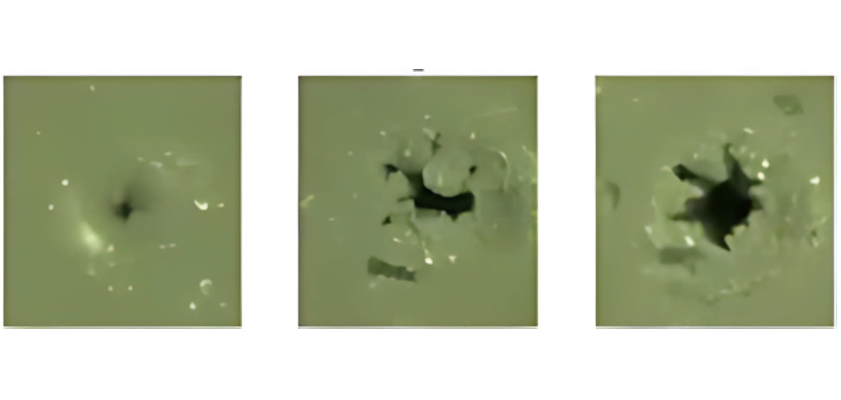
Example of damaged septa: A septum damaged in this way is the cause of many troubleshooting issues, and septa are in fact one of the most commonly replaced GC consumables.
GC Troubleshooting Course
6 - Unstable Baseline
7 - Carryover/Ghost Peaks
8 - Fronting Peaks
9 - Poor Peak Resolution
10 - Split Peaks
11 - Response Variability
12 - Retention Time Variability
13 - Course Summary & Test
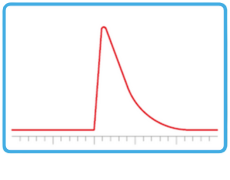
Peak tailing is one of the most common peak shape problems in gas chromatography. While it might seem minor, tailing can lead to poor integration, inaccurate quantification, and reduced resolution — especially for closely eluting compounds.
Tailing typically arises from poor sample introduction, adsorption, or hardware-related issues, and sometimes from inadequate method design for certain analytes.
Here are some things to check:
If you’re using manual injection, uneven or slow plunger depression can cause tailing due to uneven sample transfer.
Solution:
If you're already using an autosampler, the issue is likely hardware-related.
Leaks or incorrect installations are common physical causes of tailing:

Example of damaged septa: A septum damaged in this way is the cause of many troubleshooting issues, and septa are in fact one of the most commonly replaced GC consumables.
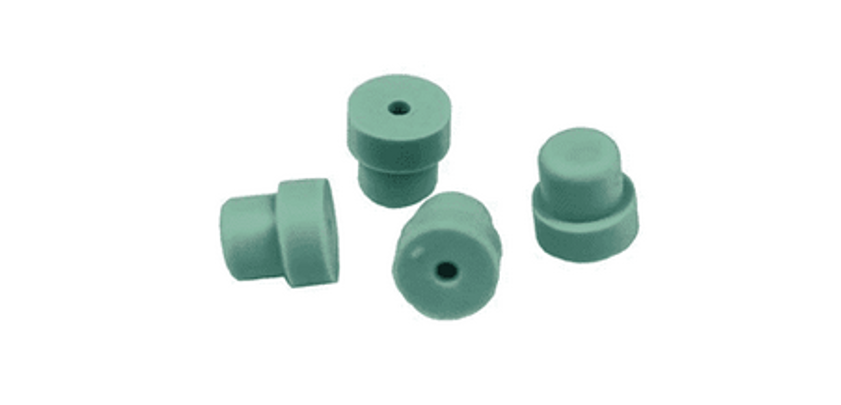
Example of clean, undamaged septa
Incorrect column installation introduces dead volume, causing peak tailing.
Checklist:
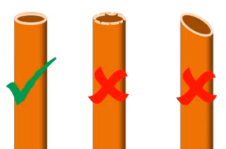
A straight, 'square' cut at the end of the column is required to ensure good chromatography.
Try to avoid having a jagged edge or cutting at an angle, as this can have an adverse effect on the chromatography and retention reproducibility.
Adsorption or contamination inside the inlet liner or column can lead to tailing, especially for active compounds.
What to do:
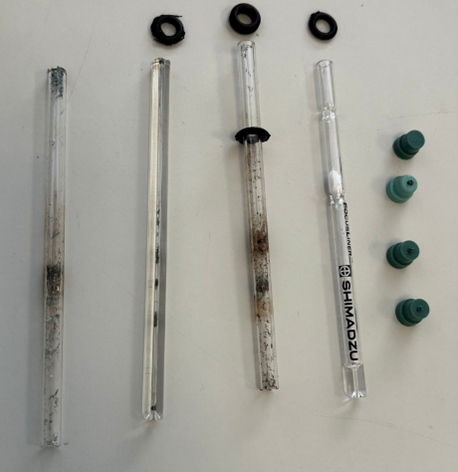
Liners typically contain silica (glass) wool to aid with injection, but over time these can turn black because of contamination – a sure sign that they need to be replaced (3 liners from the left are dirty).
If tailing affects only specific peaks, the issue could be related to compound chemistry or method parameters.
Solutions:
| Potential Cause | Solution |
|---|---|
| Manual injection errors | Use autosampler, inject smoothly |
| Leaks or worn septum | Replace septum/seals, check connections |
| Incorrect column depth or cut | Reinstall column, square-cut ends |
| Dirty liner or inlet | Replace liner, use deactivated wool |
| Column contamination | Trim or bake column, replace if needed; |
| Analyte reactivity | Change column phase or derivatize sample |
Video: How to Change Liner and Septum